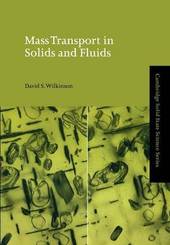
|
Mass Transport in Solids and Fluids
Paperback / softback
Main Details
| Title |
Mass Transport in Solids and Fluids
|
| Authors and Contributors |
By (author) David S. Wilkinson
|
| Series | Cambridge Solid State Science Series |
|---|
| Physical Properties |
| Format:Paperback / softback | | Pages:290 | | Dimensions(mm): Height 244,Width 170 |
|
| Category/Genre | Materials science |
|---|
| ISBN/Barcode |
9780521624947
|
| Classifications | Dewey:530.415 |
|---|
| Audience | | Professional & Vocational | | Tertiary Education (US: College) | |
|---|
| Illustrations |
17 Tables, unspecified; 4 Halftones, unspecified; 117 Line drawings, unspecified
|
|
Publishing Details |
| Publisher |
Cambridge University Press
|
| Imprint |
Cambridge University Press
|
| Publication Date |
2 November 2000 |
| Publication Country |
United Kingdom
|
Description
The field of matter transport is central to understanding the processing of materials and their subsequent mechanical properties. While thermodynamics determines the final state of a material system, it is the kinetics of mass transport that governs how it gets there. This book gives a solid grounding in the principles of matter transport and their application to a range of engineering problems. The author develops a unified treatment of mass transport applicable to both solids and liquids. Traditionally matter transport in fluids is considered as an extension of heat transfer and can appear to have little relationship to diffusion in solids. This unified approach clearly makes the connection between these important fields. This book is aimed at advanced undergraduate and beginning graduate students of materials science and engineering and related disciplines. It contains numerous worked examples and unsolved problems. The material can be covered in a one semester course.
Reviews'... with its good, flowing English (easy for students to understand), clear layout - especially of equations, and ample examples of real practical cases, this book has very few faults. I have no hesitation in recommending this book for use in UK universities as a course reference book. The book would also be useful for anybody, including relevant physicists and chemists. In addition to materials scientists and engineers, as a reference book in research, development and even day-to-day technical problem-solving tasks.' Dr Wei Sha, Materials World
|